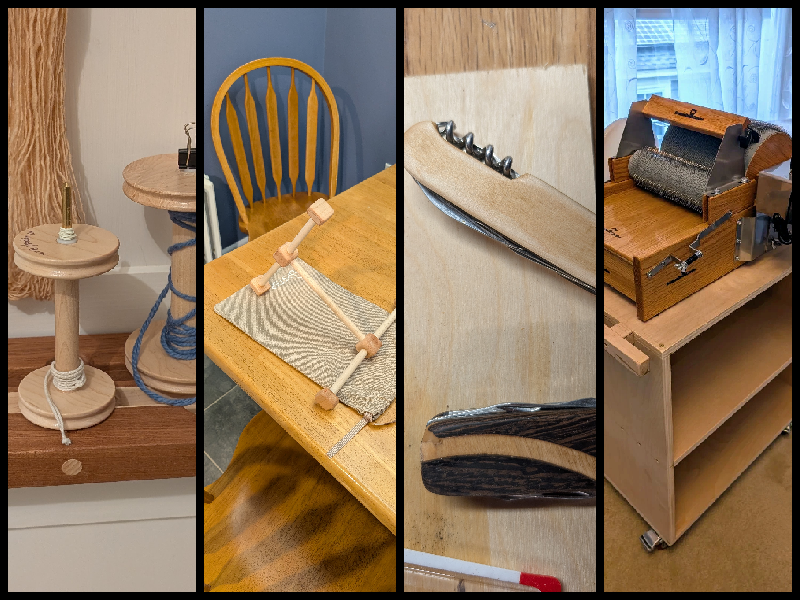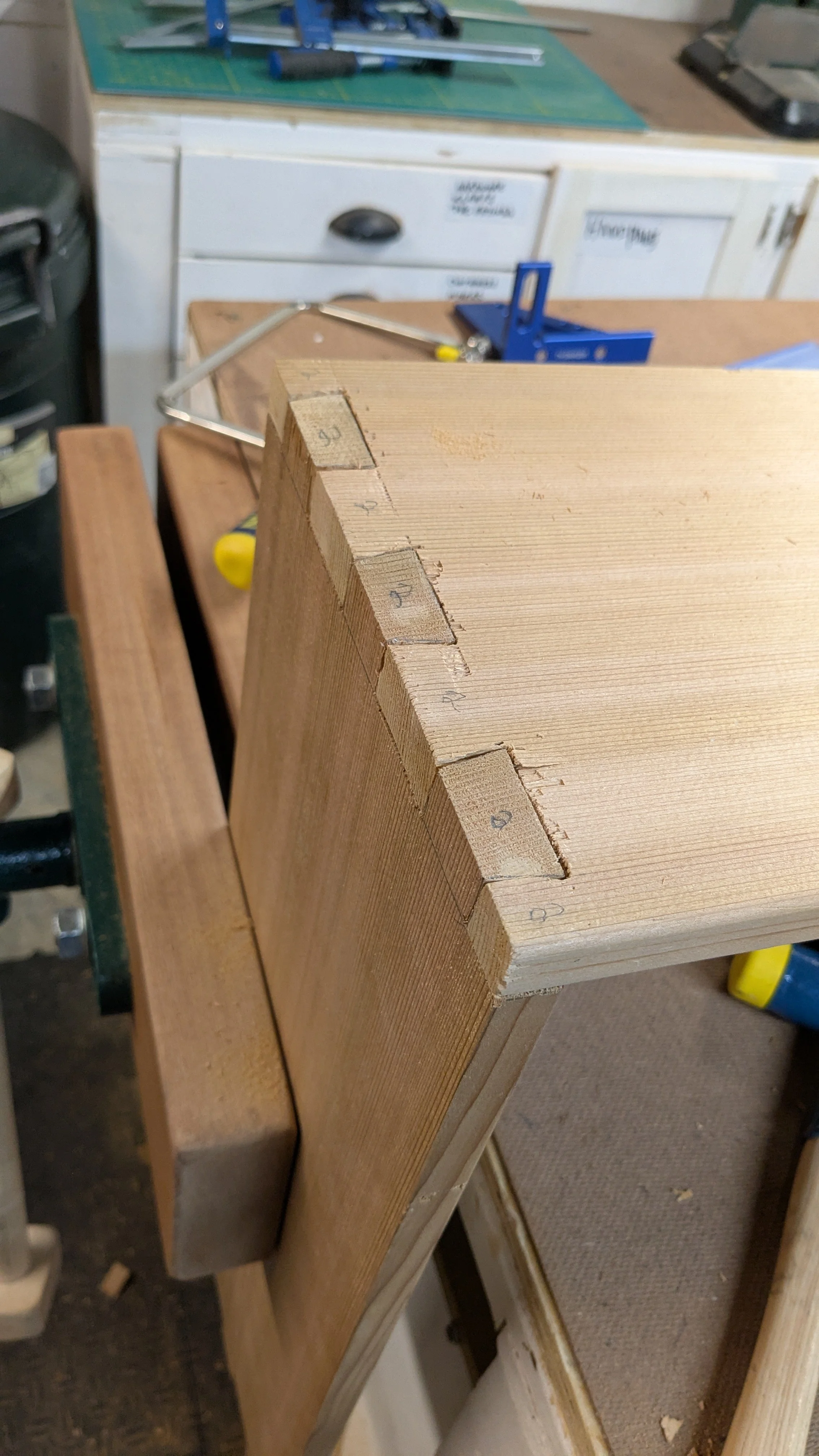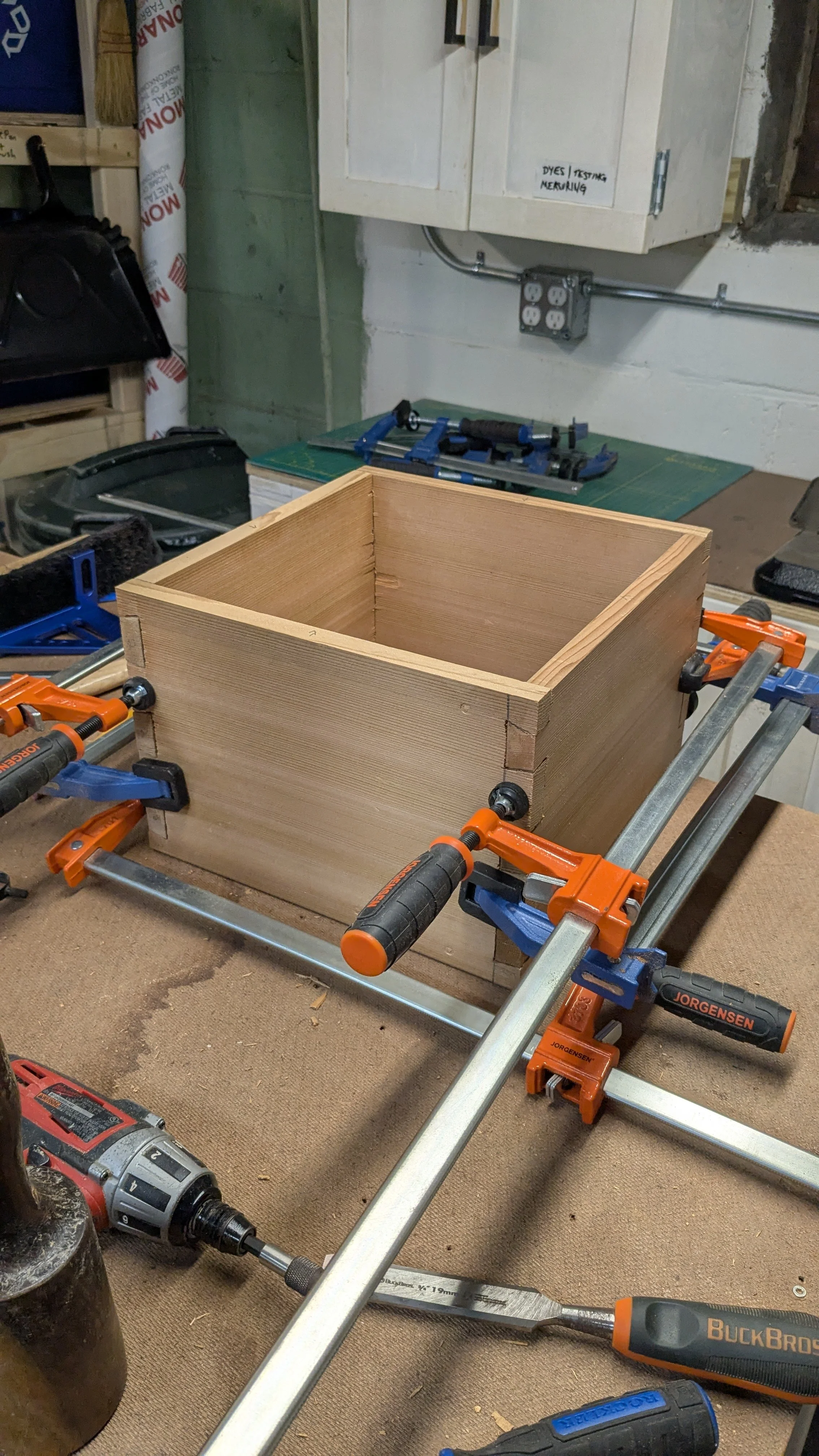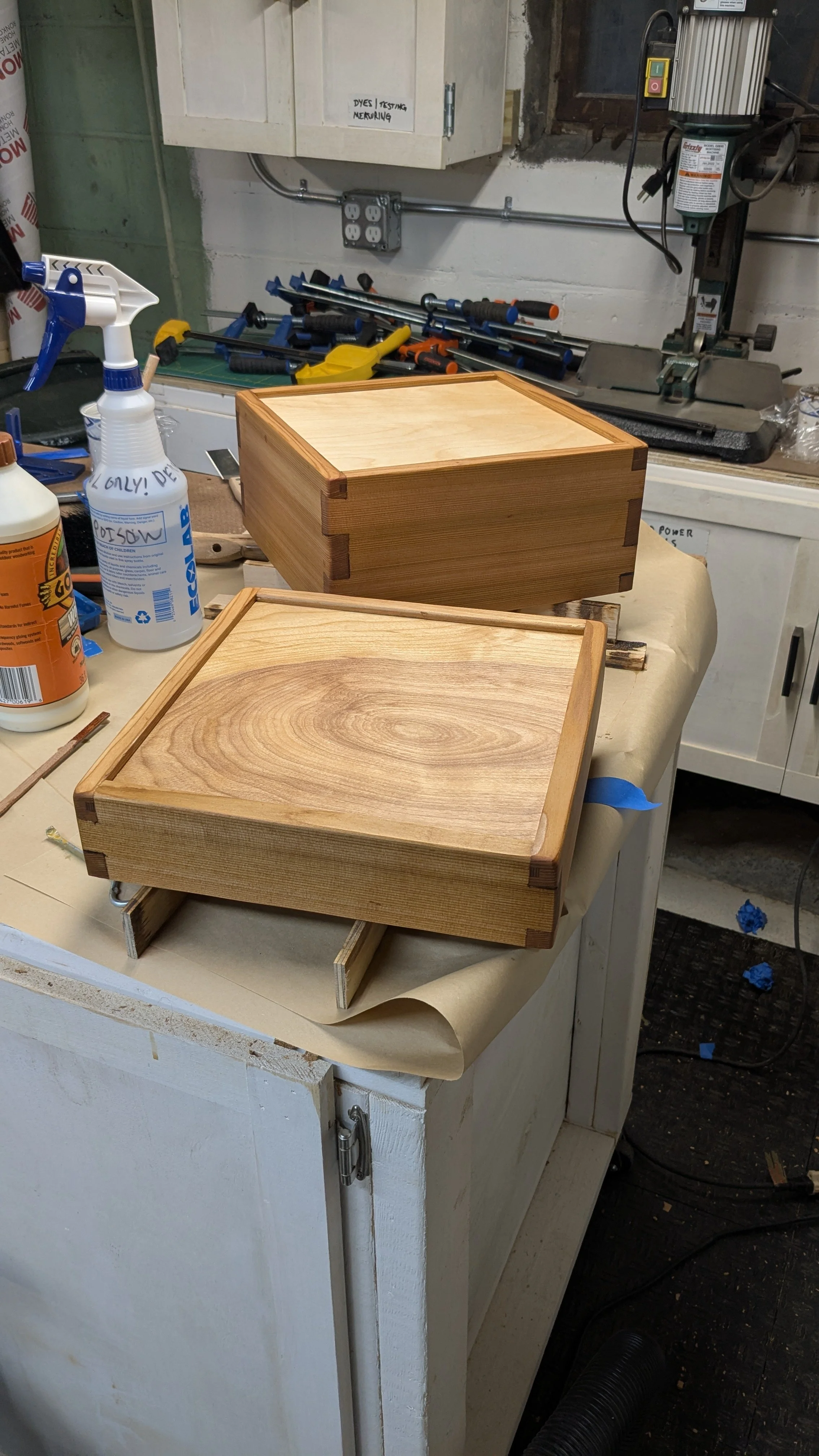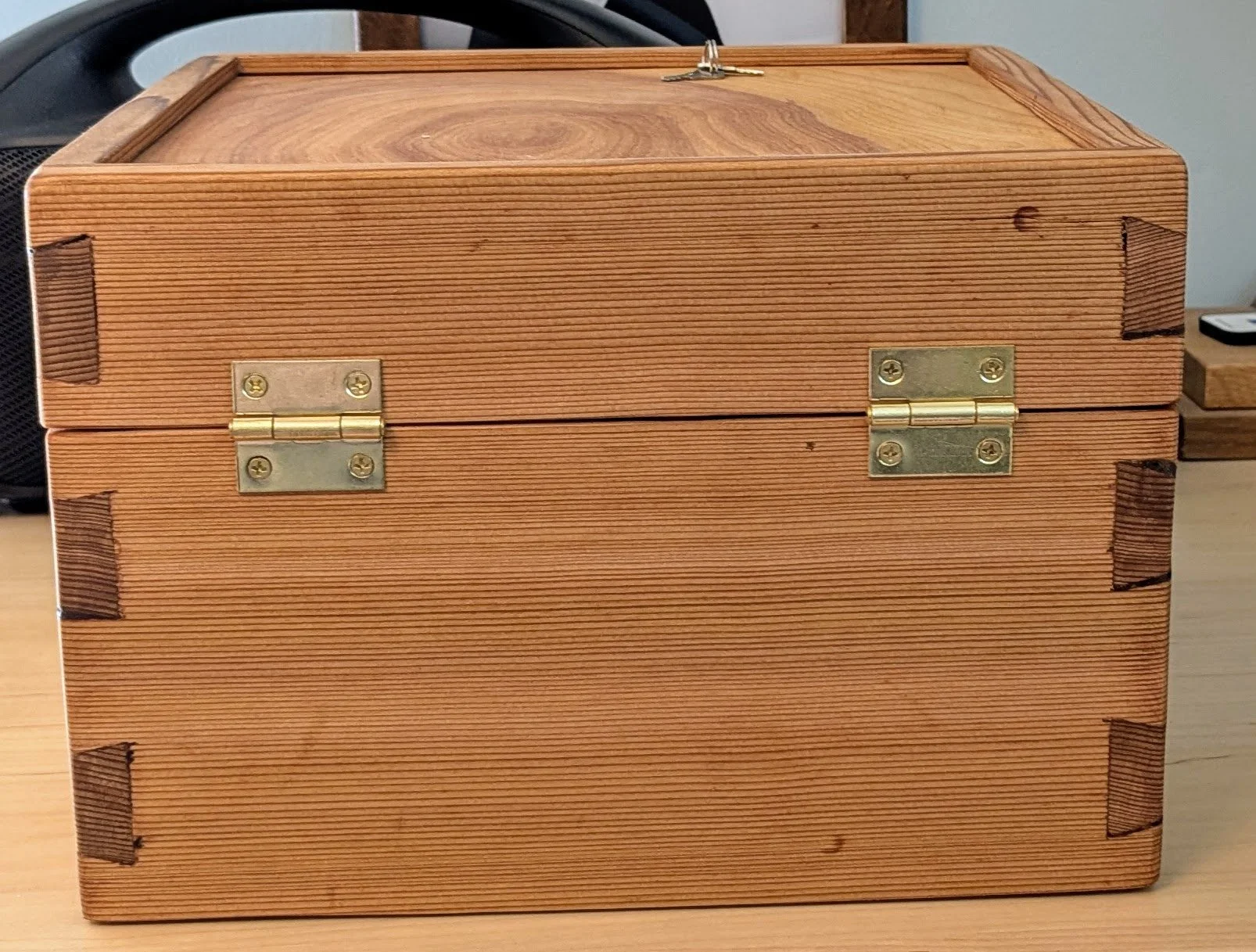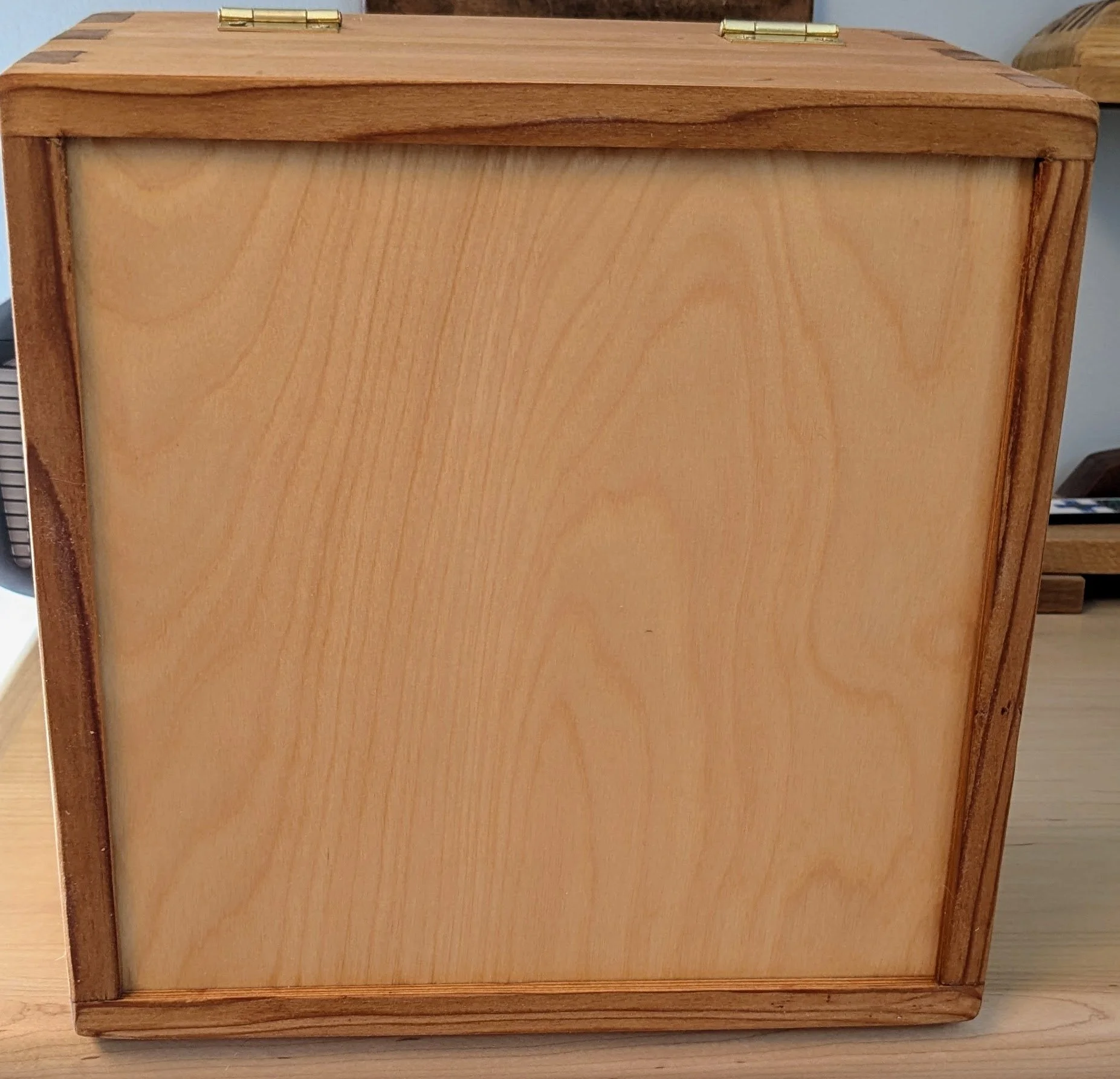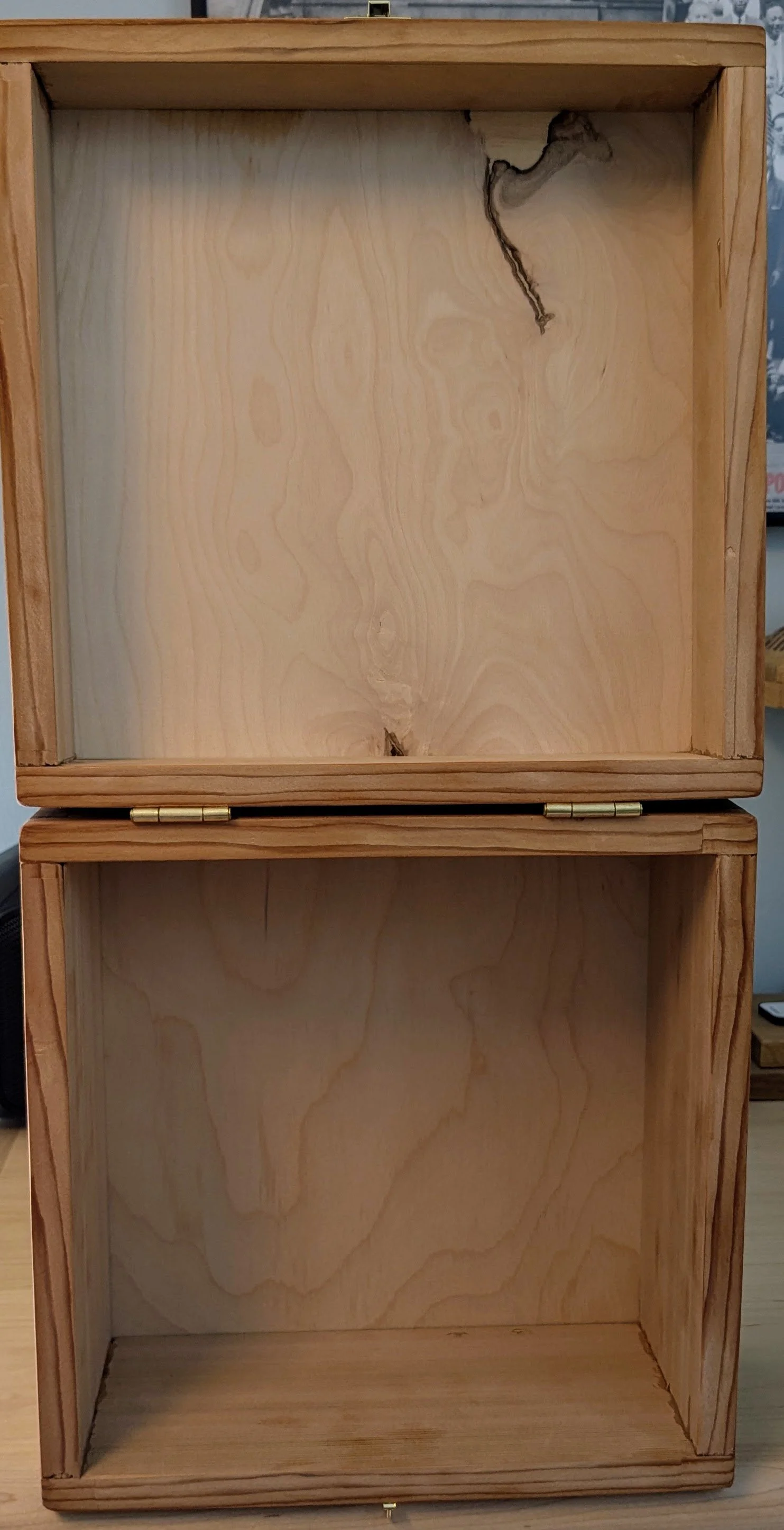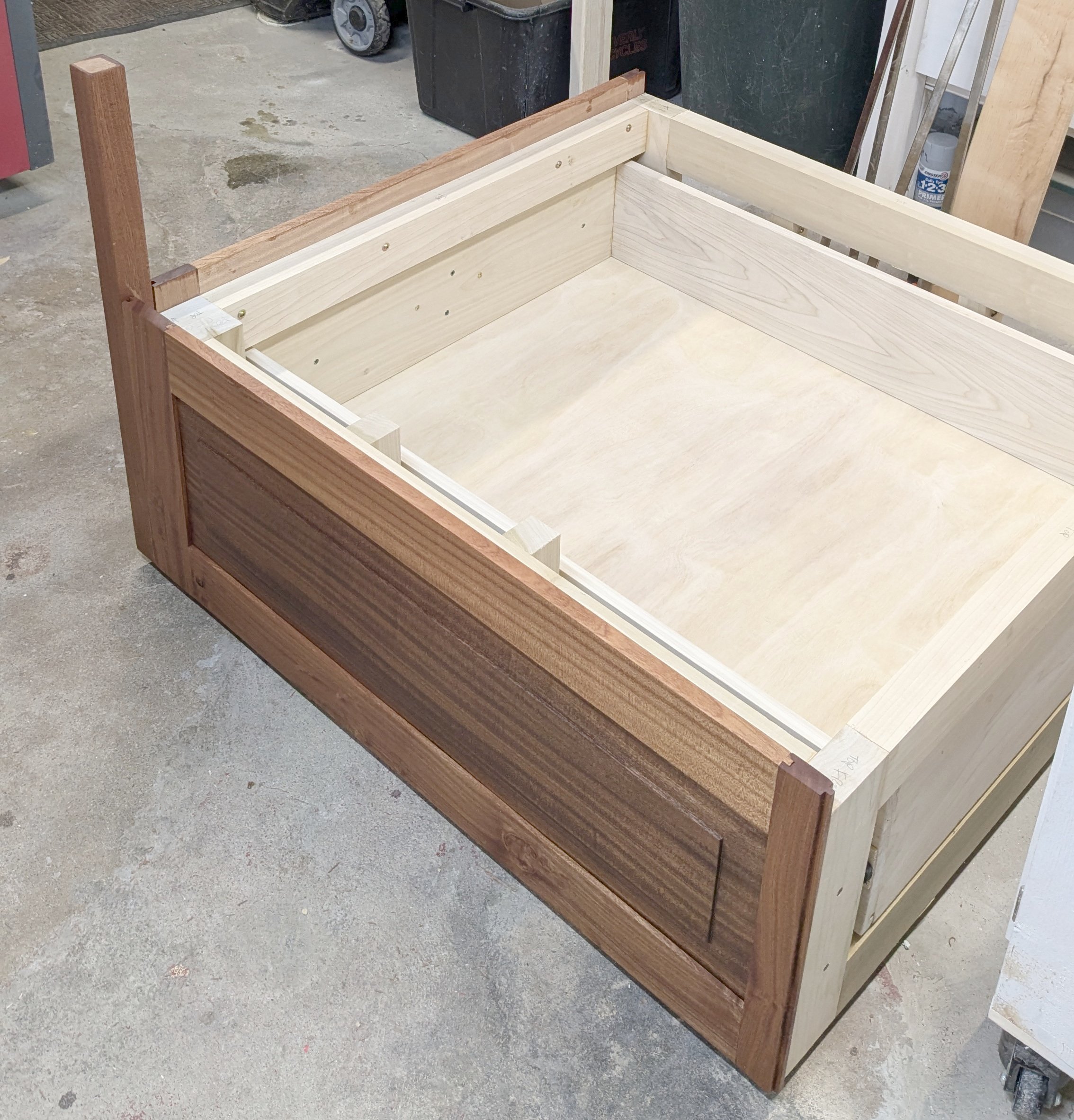When you have a small basement workshop you are always looking to carve out some more square footage anywhere possible. The image above is the reclaimed space and the project was to build the white shelving units and move the refrigerator back to the wall. Here is the before picture, below…
Behind the refrigerator along the wall is an old shelf that I built many years ago when we first moved into the house. I had to clear all of this stuff out and then dismantle the old shelf. Fortunately then as now I only use screws to put things together in the basement, so I just had to unscrew a lot of screws. I was able to salvage the 2x4’s and most of the plywood.
I ordered more of the 12x12 interlocking garage floor tiles that I have in the rest of the shop and put that down in the space. This provides protection from dampness and is easier to clean and walk on than the cement floor.
I have recently become a fan of frame-less cabinets so I built two units for the right side and stacked them, the bottom one is slightly further out because of the waste pipe behind it. I built a single unit to go over the refrigerator. The top units are screwed to the studs for support and all the units are screwed to each other as well.
I used 3/4” paint grade natural birch plywood for the bodies and 1/4” natural birch plywood for the backs. I painted them all with BINS primer just to help protect them from the damp in the basement.
You may notice a large paint stain on the floor, I had a spill of a whole roller tray of paint ( or most of it) on me, on the floor etc… Ah well… In any case the cabinets are rabbeted and screwed together, the uppers have 3/4” x 4” cleats added top and bottom at the back to support the cabinet when screwed to the studs. The backs are screwed on with #6 x 3/4” screws.
Then everything had to go back in… and I was done and I now have a very usable piece of floor space recovered. There was a bit of work disposing of the pallet and some other things that weren’t going back but that about wraps it up.


































